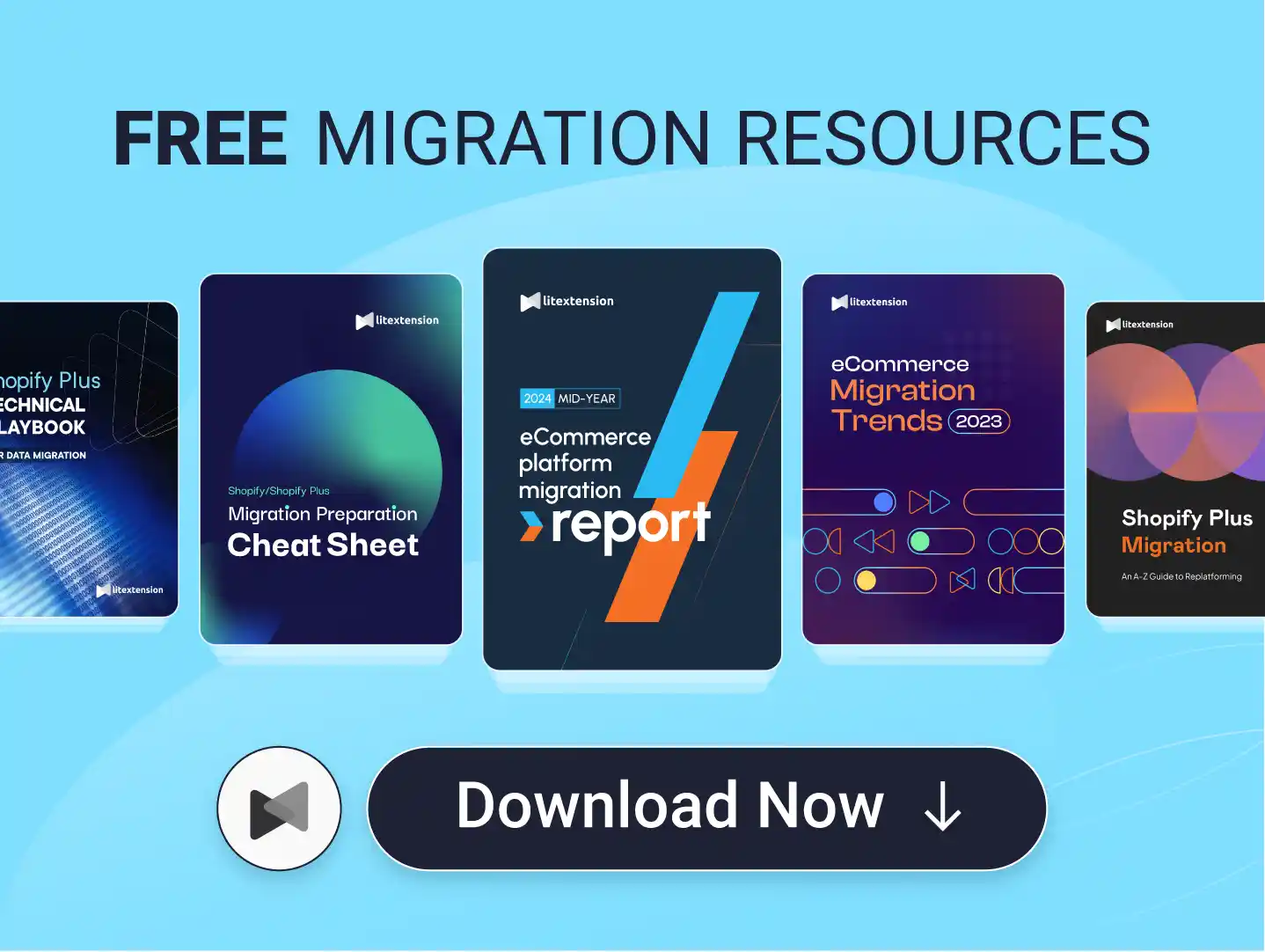Starting a business on Etsy is quite an effortless process for most people, so when I first opened my Etsy shop, I honestly thought the hardest part was over. However, after a few weeks of silence, I realized: having a great product isn’t the same as actually learning how to get sales on Etsy.
Fortunately, bit by bit throughout my first year, I found what actually worked. To get more sales on Etsy, focus on optimizing your product listings with relevant keywords, high-quality photos, and detailed descriptions to improve search visibility and conversions. Additionally, run sales and offer free shipping to attract customers, market your products on social media, and maintain an active shop by consistently adding new products. Engaging with the Etsy community and encouraging positive reviews are also crucial for long-term success.
Below are the 16 practical things I did – the exact steps that helped my shop grow from almost invisible to thriving:
- Run your Etsy shop like a real business
- Make your shopfront trustworthy (branding, about, policies)
- Showcase products with clear, compelling photos
- Describe your items precisely (sizes, colors, variations)
- Optimize titles and descriptions with buyer keywords
- Kickstart momentum with smart pricing and first-sale incentives
- Stay consistent by publishing new listings regularly
- Put customer care first, always
- Handle critical feedback professionally and move on
- Build loyalty with handwritten thank-yous and coupon codes
- Showcase positive customer reviews to build trust and influence
- Encourage cross-sells and upsells through smart product bundling
- Create a sense of urgency with limited-time offers and scarcity cues
- Sell on other eCommerce platforms to expand reach
- Promote your products on social media strategically
- Use Etsy Ads wisely to gain visibility without overspending
Keep reading to learn more!
How to Get Sales on Etsy: Build a Strong Foundation
1. Run your Etsy shop like a real business
When I opened my Etsy shop, I quickly learned that treating it like a casual side hobby would get me casual results. That's why, to learn how to get sales on Etsy, I decided to run it as a real business!
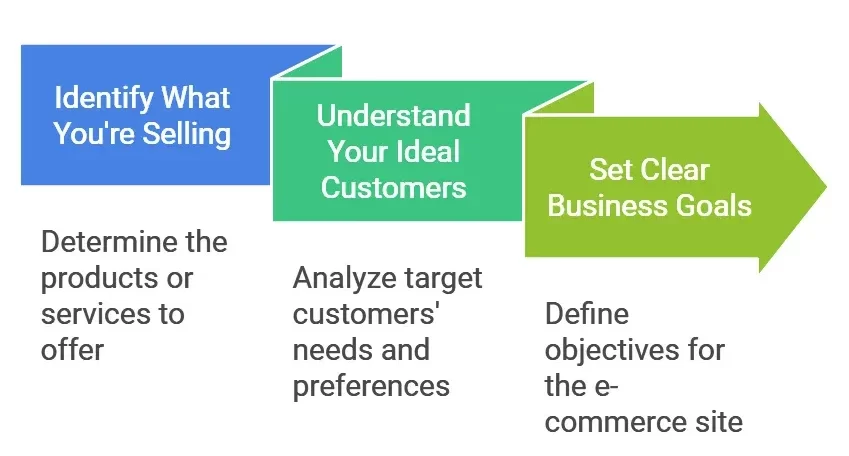
I set monthly revenue and expense targets and kept a spreadsheet for every cost (from materials and packaging to marketing). Plus, I also made sure I reinvested a portion of each sale into growth.
This shift in mindset helped me think long-term instead of chasing short-term excitement. For example, instead of spending profits on more craft supplies just because other sellers did, I analyzed which products brought the highest profit margin and invested only in restocking those. Likewise, when something didn't sell, I saw it as market feedback, which I used to adjust pricing, keywords, or even product design until the numbers improved.
Once I started running my shop with this business-first mindset, everything else – from branding to photos – started to align naturally.
2. Make your shopfront trustworthy (branding, about, policies)
After I had the foundation of a real business, I realized no one would buy from me if they didn't trust my shop. Trust is everything on Etsy because customers can't physically touch or verify what they're buying!
So, I realized I needed to treat my Etsy account like a storefront window: it needed to communicate professionalism, warmth, and transparency at a glance.
I started by developing a clear brand identity: a recognizable logo, a consistent color palette, and a tone of voice that matched my products' personality. Then, I rewrote my “About” section to tell a story, including who I am, why I started, and what inspires my designs. Instead of saying “We make handmade gifts,” I described the experience in more detail: “Every item I create is designed to bring a little calm and care into someone's day.” That small but powerful touch truly gave buyers a reason to connect with me emotionally.
Equally important were my policies. I outlined everything: estimated shipping times, what to do if something arrives damaged, and whether I accept returns. Over time, having those details upfront not only reduced customer questions but also increased conversions, as shoppers often commented that they bought from me because my shop looked “reliable.”
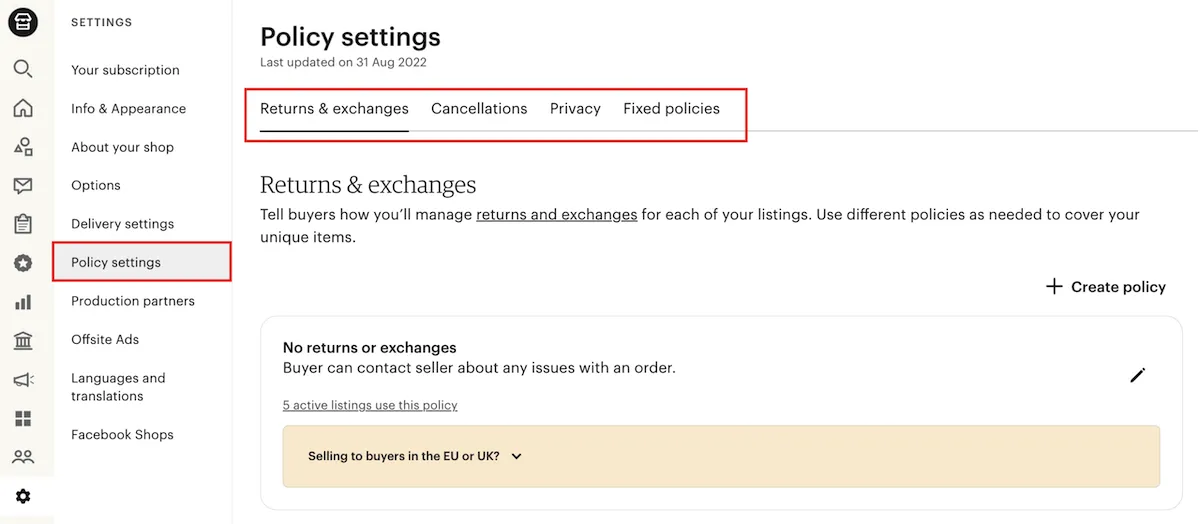
3. Showcase products with clear, compelling photos
Trust building aside, the next challenge in how to get sales on Etsy was proving the value of what I sold. And that began with the photos.
Indeed, your photos are your storefront. They are the first (and sometimes only) chance to convince a buyer that your product is worth their money!
I used to underestimate this, uploading only quick phone shots and wondering why sales stalled. Fortunately, I then came across a 2024 report from Business Dasher, which found that listings with high-quality photos can increase conversion rates by up to 94% compared to poorly lit or inconsistent ones. The statistic really hit me.
From then on, I made product photography my priority. I learned to use natural light by shooting near a window during mid-morning hours. Furthermore, I used a neutral backdrop to make colors stand out, and took at least five angles for each product (front, side, close-up, and a lifestyle shot showing it in use).
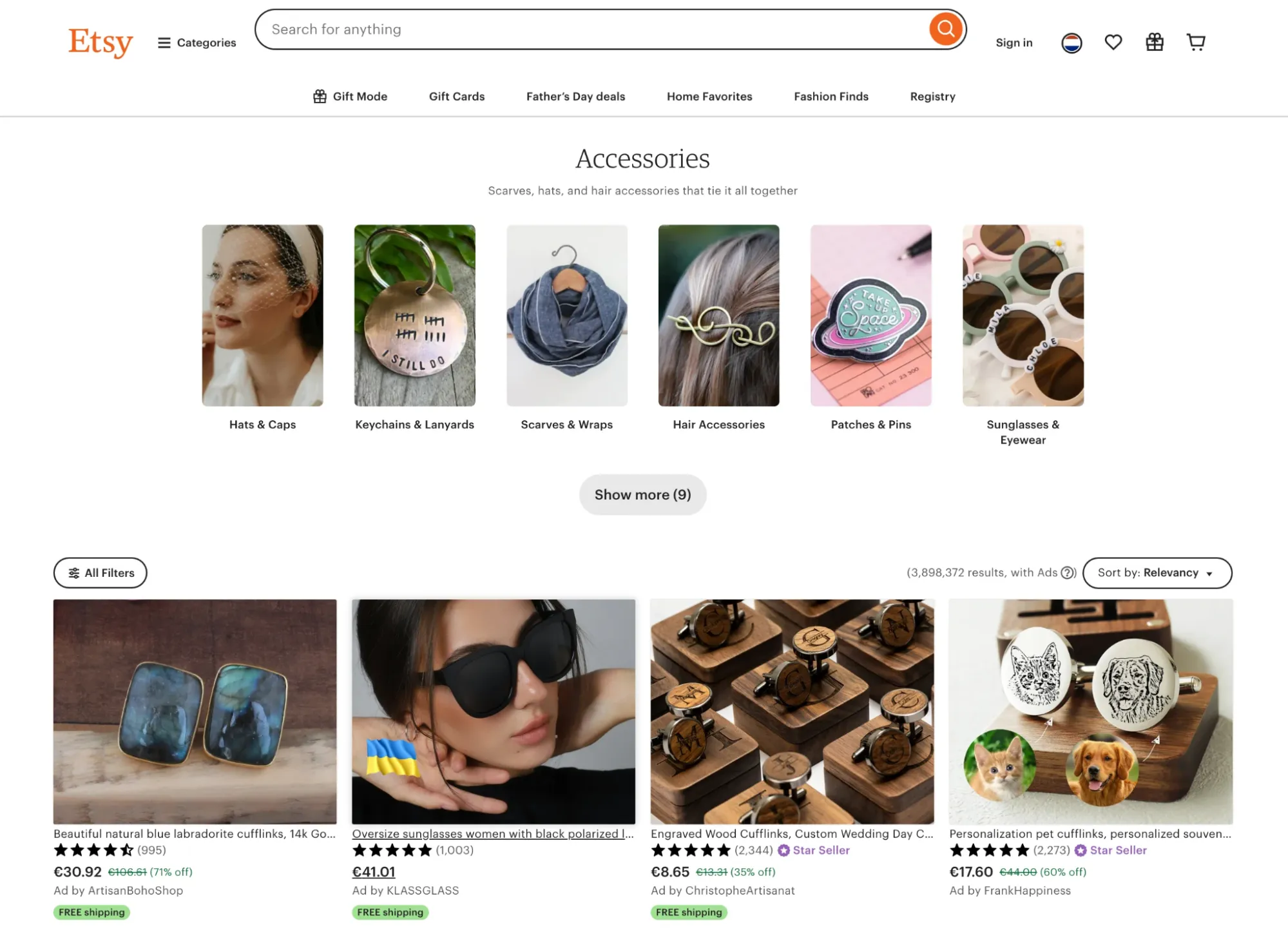
Most importantly, I made sure to keep the visual style consistent across listings, using the same background tone, lighting, framing, etc. This visual harmony made my shop look professional and cohesive, like a real brand rather than a collection of random items. Within a month, my listings started getting more saves and views, and even Etsy's algorithm began surfacing them more often!
4. Describe your items precisely (sizes, colors, variations)
Great photos grab attention, but great descriptions close the sale.
Like most beginners, I used to write very brief descriptions and assumed buyers would just “get it” from the pictures. But the truth is, unclear listings create hesitation, and people don't buy when they're uncertain! So I rewrote every description with the goal of answering every possible question before it was asked.
I began with the essentials: dimensions, materials, and available variations. If a product came in multiple sizes or colors, I explained exactly how to select the right one and what differences to expect.
Then, I went deeper into sensory details: how it feels, looks, or functions in daily life. For instance, instead of saying “soft pillow cover,” I wrote, “made from washed linen that feels cool against the skin and softens even more after each wash.”

I also learned to use formatting strategically through short paragraphs, clear headings like “Materials” and “Care Instructions,” and simple, natural language. The fewer doubts a buyer has, the easier it is for them to click “Add to cart.”
How to Get Sales on Etsy: Improve Visibility & Discoverability
5. Optimize titles and descriptions with buyer keywords
Once my listings looked and read professionally, I turned my focus to helping people find them. No matter how beautiful your shop is, it won't sell if no one sees it, and Etsy's search engine is driven by keywords. So, for how to get sales on Etsy, I started studying how my potential buyers actually searched.
Instead of guessing, I used Etsy's own autocomplete suggestions to see what people typed most often. For example, typing “ceramic mug” might reveal “personalized ceramic coffee mug” or “minimalist pottery mug.” Those suggestions became my real-time keyword research! Plus, I also used tools like eRank and Marmalead to confirm search volume and competition, then rewrote my titles and tags to include those phrases naturally without stuffing.
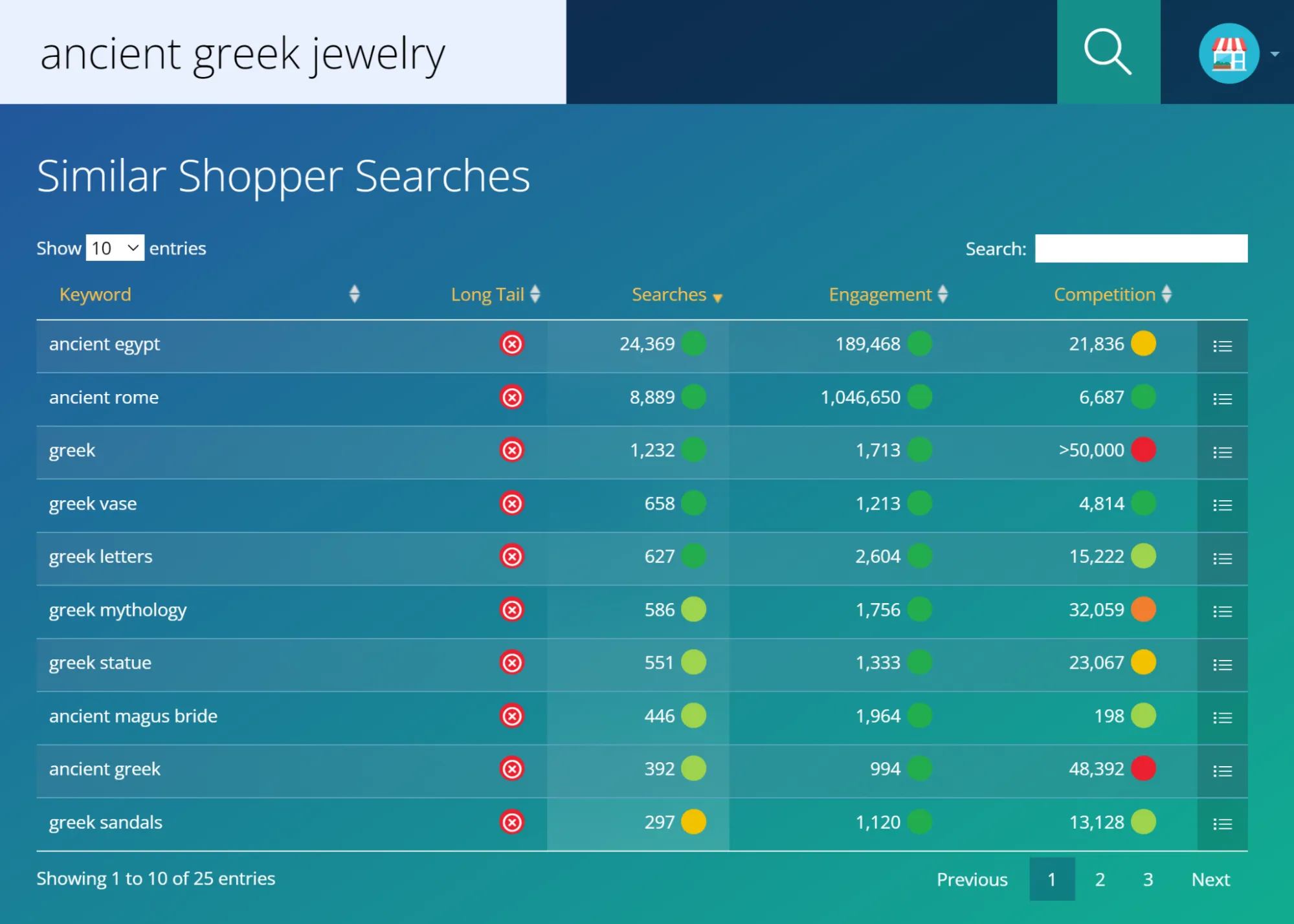
Most importantly, optimization also helped me understand my niche better. When observing what keywords performed best, I could predict trends and refine my product line, all of which reached the right audience faster. That's why my organic traffic quickly grew after I carried out this strategy – not from paid ads, but from shoppers who were actively searching for exactly what I sold.
6. Kickstart momentum with smart pricing and first-sale incentives
After getting my shop set up with proper photos and listings, I still faced one stubborn problem during my first few weeks: no one was buying.
Soon, I learned that the hardest sale you'll ever make on Etsy is your first one. Without sales or reviews, buyers hesitate, not because your product looks bad, but because there's no proof that anyone else has trusted you before. I had to find a way to break that invisible wall!
So I started experimenting with pricing and incentives. I didn't want to devalue my work, but I also couldn't afford to scare away first-time buyers with premium pricing before my shop had a reputation. So I calculated my real costs (materials, packaging, Etsy fees, shipping, and a small margin), then set an introductory price about 10% below my ideal rate.
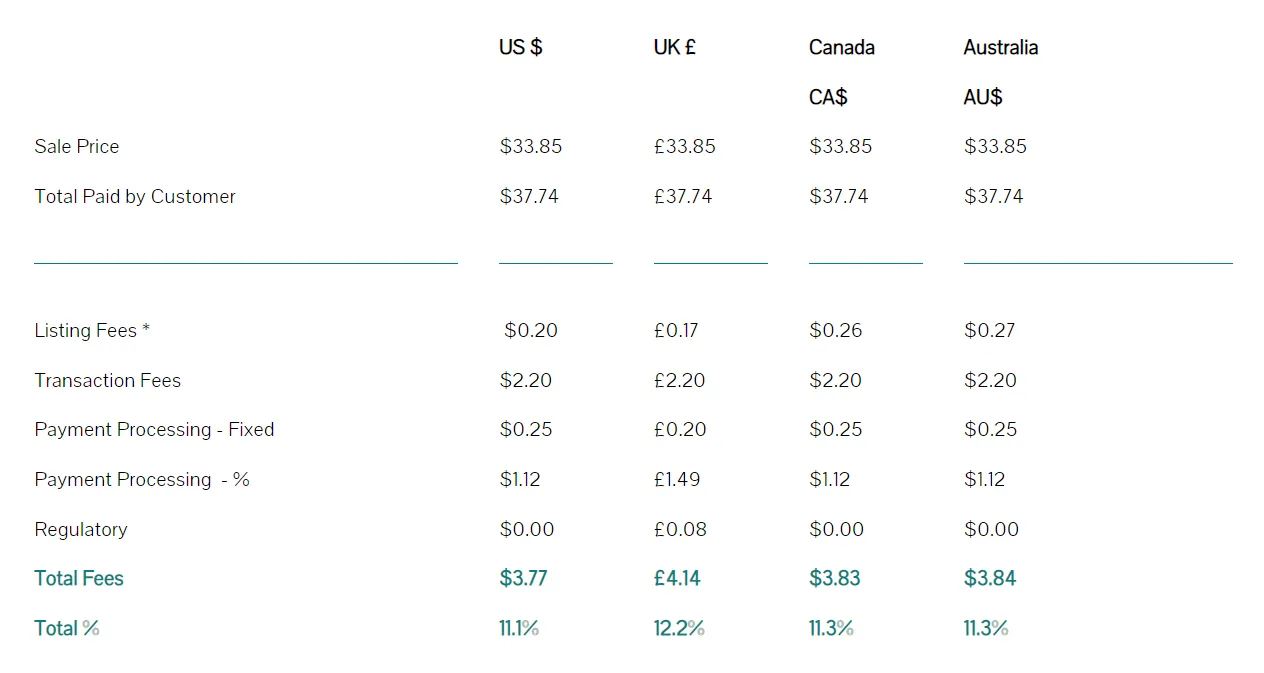
And that's not all. I also paired my products with a message, “Special launch offer for new customers,” to make the lower price sound intentional, not desperate.
To my delight, the psychology worked: people love feeling like early supporters of something new, and once I got my first few reviews, my traffic began snowballing! In fact, Power Reviews surveys found that adding even just one review to a product page with zero reviews can lift conversion by up to 26%.
7. Stay consistent by publishing new listings regularly
After getting a taste of the first sales, I thought I could relax for a bit. Big mistake. Within two weeks of not posting anything new, my traffic fell off a cliff!
Etsy rewards consistent movement, including every new listing, renewal, or update, which sends a signal that your shop is active. When I stayed idle, I disappeared from search results. That's when I decided consistency would be my non-negotiable if I want to learn how to get sales on Etsy.
I set a simple rule: publish at least one new listing every week, no matter how small the update. Sometimes it was a new color variation, sometimes a seasonal twist, and other times a completely new product. The act of listing regularly did two things: one, it told Etsy's algorithm my shop was alive; second, it reminded buyers that I was still creating.
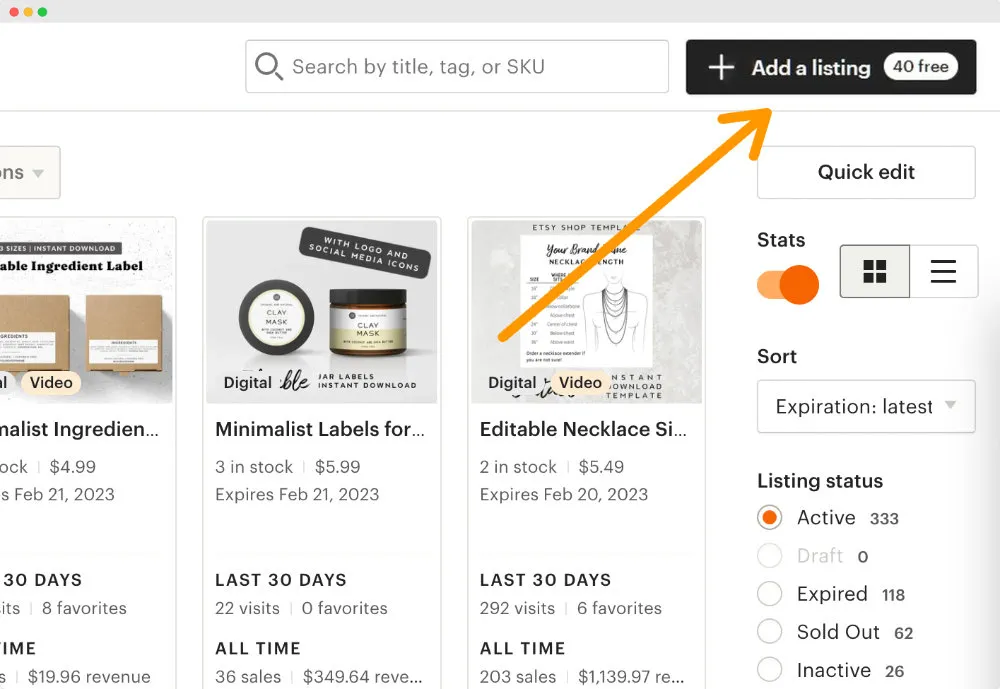
Not to mention, beyond the algorithm, consistency shaped me. It kept me thinking creatively while pushing myself to expand my catalog and refine my process. Each new listing was a chance to test my keywords, pricing, and even photography angles!
How to Get Sales on Etsy: Strengthen Customer Trust & Experience
8. Put customer care first, always
Needless to say, on Etsy, customer care is your real marketing. Remember that people don't just buy your product; they also buy the way you treat them.
From the start, I decided I'd respond to every message within a few hours, even if it was just to acknowledge the question and say I'd follow up soon. I used a warm, conversational tone and included personal touches like using their first name or referencing what they'd ordered. Most importantly, when issues happened (and they always do), I didn't hide from them. I once had an order go missing during shipping, and instead of blaming the carrier, I immediately contacted the buyer and shipped a replacement at my expense. That buyer ended up leaving a glowing review and tagging my shop on Instagram.
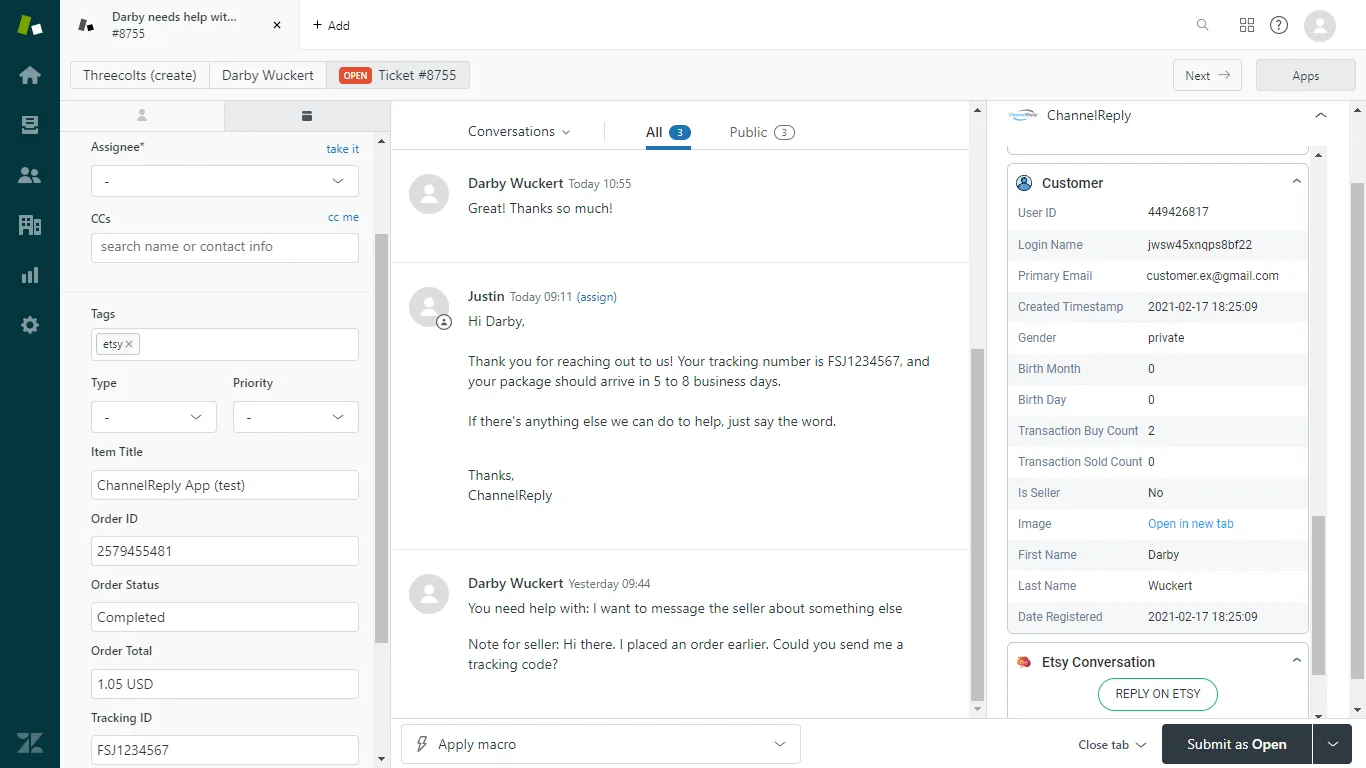
Additionally, as my shop grew, I created small systems for customer care: reminders to follow up after delivery, saved message templates for frequent questions, and a list of customers who'd bought multiple times. As a result of all my extra effort, repeat customers eventually became my most reliable sales source, even during slow months (something I will return to discuss in more detail later).
9. Handle critical feedback professionally and move on
Even with the best intentions, I wasn't immune to bad reviews. The first one I received was a one-star rating, complaining that the color “looked different in person.”

I remember staring at it for half an hour, my stomach sinking. But after that moment passed, I realized that how I handled criticism would define my reputation more than any five-star review ever could. In fact, the buyer wasn't exactly wrong; the lighting in my photos had indeed slightly exaggerated the tones. So I redid the photos under natural light, updated the listing, and publicly replied and explained under the review.
The great news is that such transparency completely changed how future buyers perceived me. In fact, several even mentioned in later reviews that they chose my shop because they saw I handled criticism professionally!
In addition, I also started keeping a private “feedback log,” which is a running list of every complaint or suggestion customers made. If multiple people mentioned slow shipping, I reviewed my process; if they found my descriptions unclear, I rewrote them. Over time, this strategy turned bad reviews from something scary into reliable, real-time data for improving my shop.
10. Build loyalty with handwritten thank-yous and coupon codes
After I'd built a steady flow of customers, I started thinking about sustainability. I didn't want my shop to depend entirely on new visitors every month. After all, a repeat buyer is easier, cheaper, and more valuable than a new one!
So, to master how to get sales on Etsy, I began adding small, personal touches that encouraged people to come back.
My favorite tactic was including a handwritten thank-you note with every package. It wasn't long, actually, just one or two sentences like, “Hi Emma, thank you for supporting my little shop! I hope this piece adds a little joy to your space.” I also added a small printed card with a custom coupon code (usually 10% off for 30 days) to give buyers a concrete, actual reason to return.
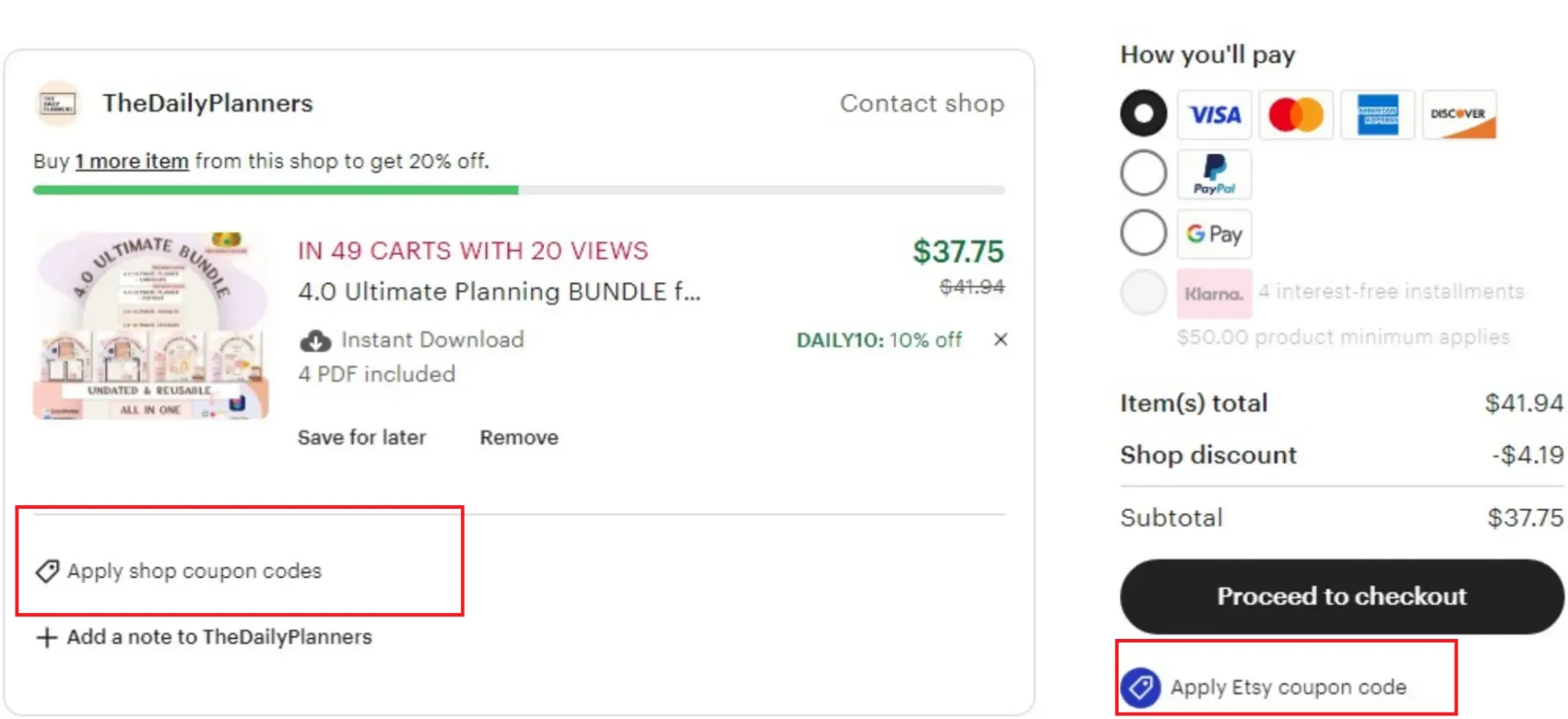
At first, I wasn't sure it would make much difference. But over time, I started recognizing familiar names in my orders. Some even mentioned the thank-you note in their reviews, and a few posted photos of my packaging on social media, tagging my shop and sharing their experience.
11. Showcase positive customer reviews to build trust and influence
After I’d accumulated some sales, I realized that the reviews themselves were gold that I wasn’t using enough.
In many cases, a potential buyer will look for social proof before making a decision, and (as mentioned earlier), reviews are the strongest signals available on Etsy. Even a low-priced product with displayed reviews can enjoy a conversion rate of up to 190%, and for higher-priced items, that bump can go up to 380%, according to the Medill Spiegel Research Center!
So, for how to get sales on Etsy, I shifted part of my effort into actively showcasing the best reviews.
First, I made sure every listing showed images or excerpts from customer reviews in the listing gallery or first image. I also turned positive reviews into actual promotional graphics: I took quotes like “Absolutely perfect, faster than expected” and overlaid them on product photos for use in my banner, social media, or even on listing thumbnails. This way, when someone lands on my page, they see evidence that others bought and liked it, not just my own claims.
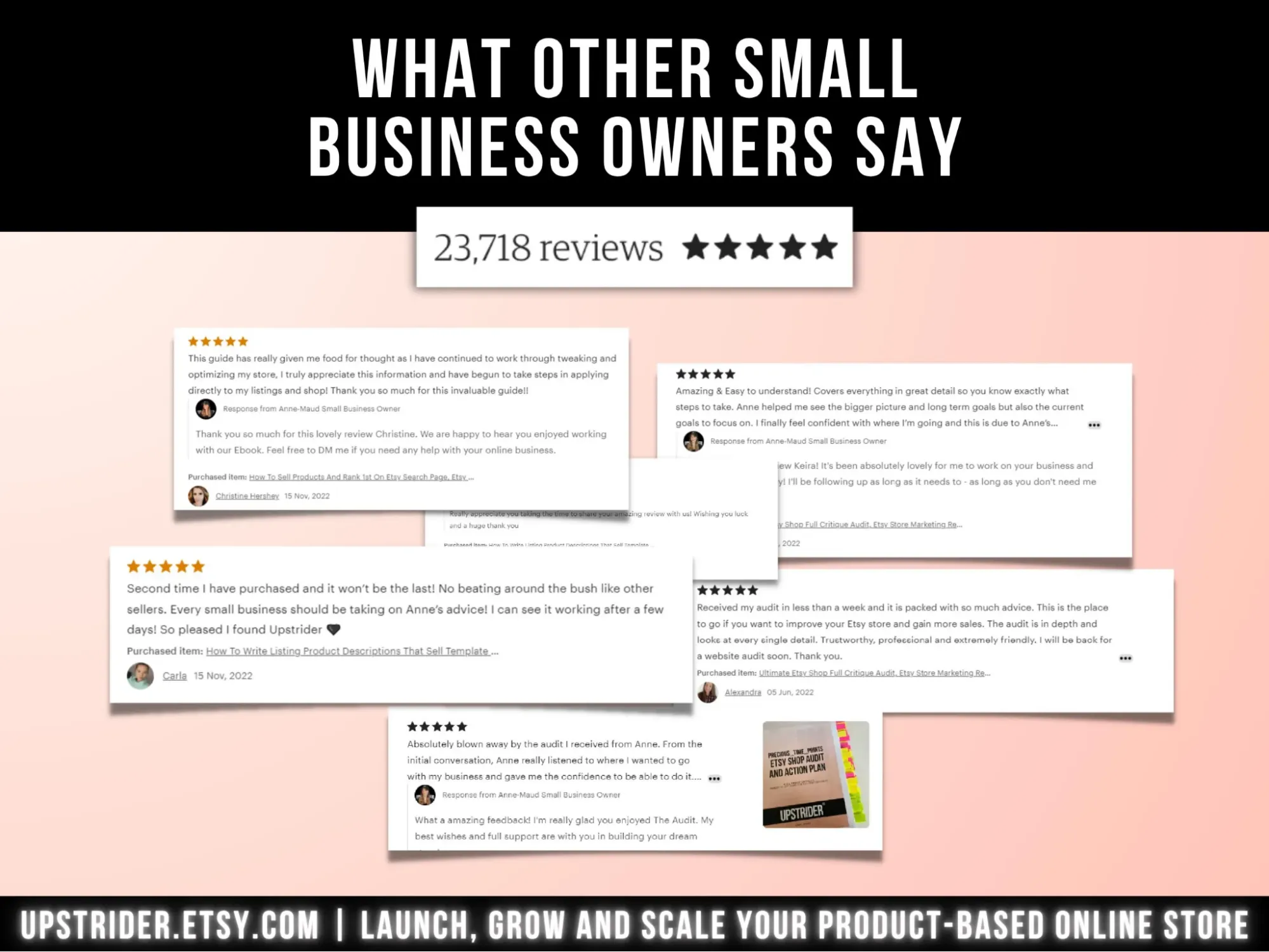
Second, I invited my past customers to share photos along with their reviews. When they added images, I refreshed the listing photos to include “customer photo” thumbnails. People trust other buyers more than the seller, so seeing the product in real life (even imperfect lighting) helps close the gap between expectation and reality.
How to Get Sales on Etsy: Increase Order Value & Conversion
12. Encourage cross-sells and upsells through smart product bundling
With the products and reviews fully established, it felt wasteful to just let customers buy a single item and leave. I started thinking: how can I get each buyer to spend just a little more in a way that feels natural and helpful?
That’s where cross-sells and upsells came in, especially through thoughtful bundling!
I looked at my product catalog and identified natural pairings or complements; for example, if I sold handmade candles, a matching candle snuffer or tray made sense. Then, I created “kit bundles” that combined two or three complementary items at a slight discount relative to buying them separately, and I displayed those bundles next to individual listings. Because the bundled price felt like a deal, many customers chose the bundle instead of the single item.
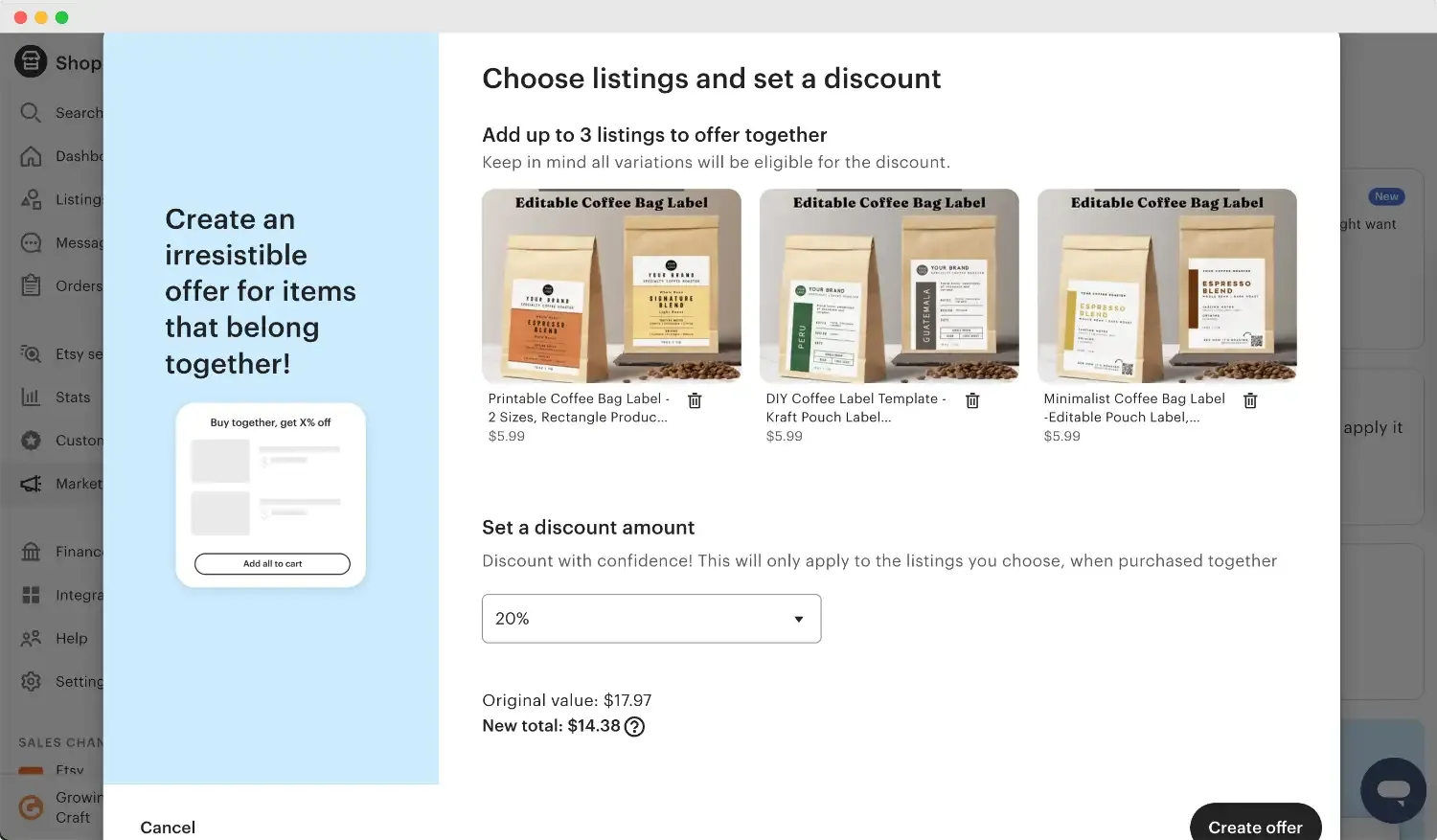
I also used upselling: when someone selected one product, I offered them an upgrade version (e.g., “premium” material, larger size, or extra finish) right before “Add to Cart” or as an alternate option. I framed it as “for just a little extra, here’s a version with [enhanced benefit].” Because buyers were already in their buying mindset, many gladly accepted the extra costs; over time, bundling and upsell revenue came to represent 15 to 25% of my total monthly sales.
13. Create a sense of urgency with limited-time offers and scarcity cues
Once I had a higher average order value per customer, the next challenge was how to get sales on Etsy by keeping traffic steady.
After all, even with optimized listings and strong bundles, too many visitors linger without buying. I needed psychological nudges to push them over the line. For that reason, I decided to introduce urgency and scarcity tactics.
I occasionally launched time-limited offers (for example, “24-hour flash sale – 10% off everything”) or “limited quantity remaining” labels (e.g., “Only 3 left”).
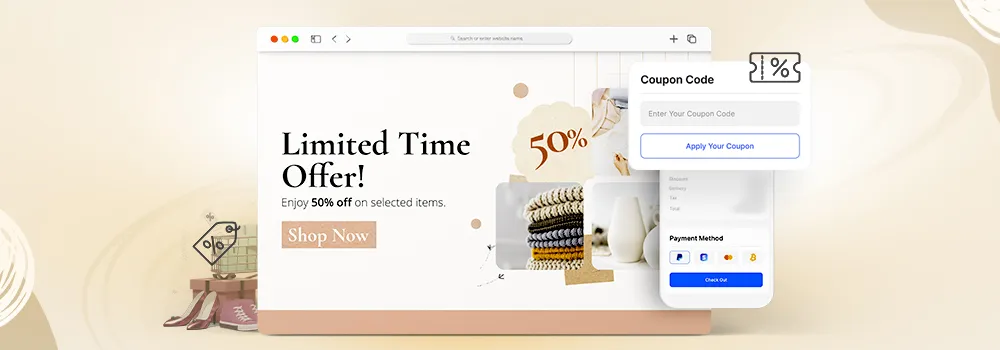
Because people hate missing out, they convert faster under pressure. Still, I made sure not to overuse it; if you always say “limited,” people stop believing. But used sparingly, it nudged ambivalent shoppers to act now!
Expand Your Reach Beyond Etsy
14. Sell on other eCommerce platforms to expand reach
Even with steady traction on Etsy, it's undeniable that relying on a single platform is very risky. Algorithms change, ad costs fluctuate, and one policy update can affect your visibility overnight!
Hence, I decided to expand my reach by selling on other eCommerce platforms. That's when I discovered LitCommerce, a multichannel selling tool that made expansion manageable.
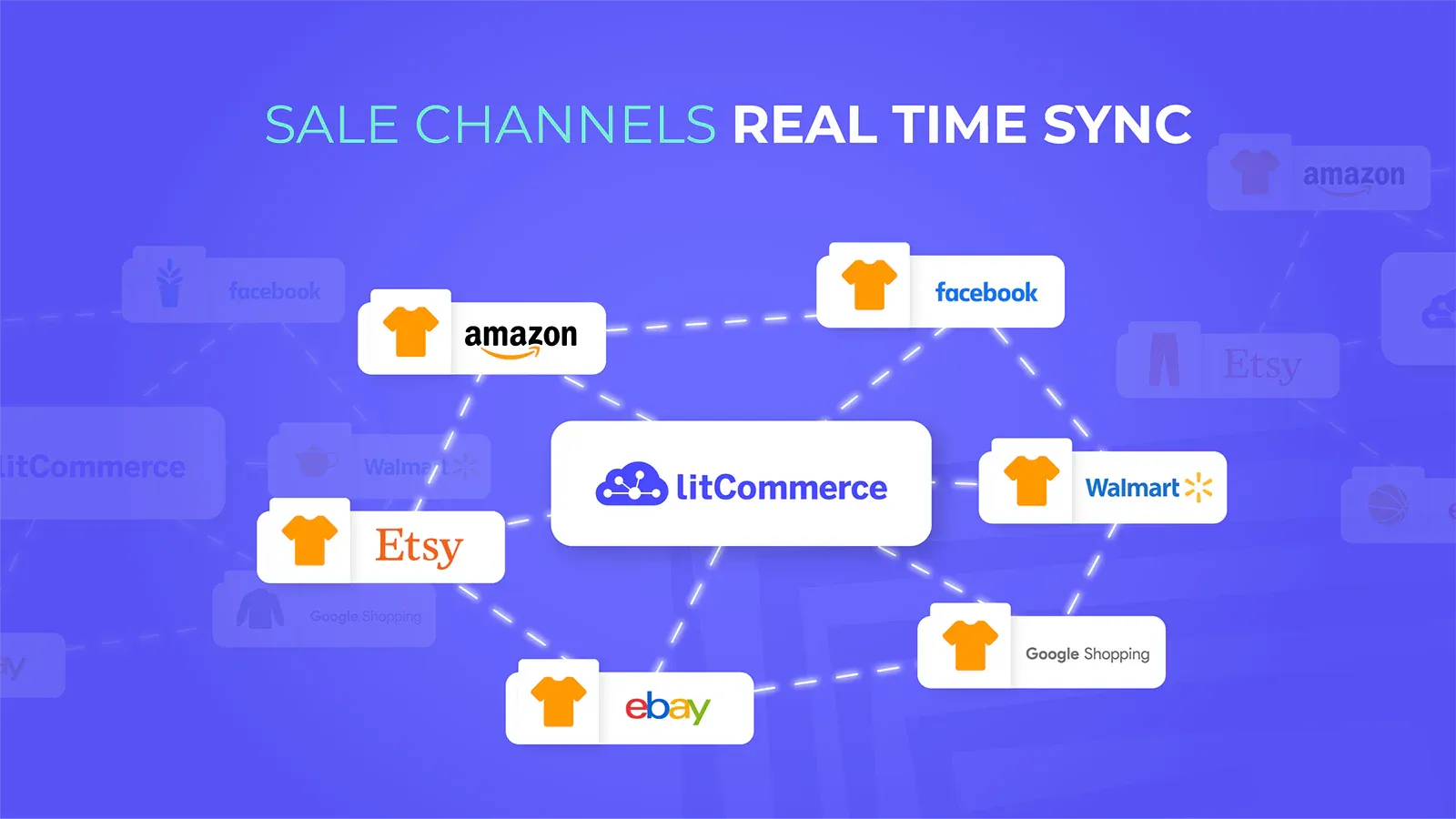
Instead of duplicating my work for each platform, I could connect my Etsy shop to others (like Shopify, Amazon, or TikTok Shop) and control everything from a single dashboard. LitCommerce automatically synced inventory, product details, and orders across all channels, so if one item sold on Etsy, it instantly updated everywhere else. It also lets me adjust pricing per platform (for example, slightly higher prices on marketplaces with higher fees) without breaking consistency.
This strategy truly gave me a safety net: if Etsy traffic dipped, I still had orders flowing from other sources. Plus, customers who discovered me through my own site or Amazon often came back to Etsy to repurchase, which, quite amusingly, boosted my Etsy metrics even more.
15. Promote your products on social media strategically
Aside from eCommerce platforms, social media also became my tool in how to get sales on Etsy.
I focused on platforms where my target audience spent time (for example, Instagram, Pinterest, TikTok). Then, I used the review quotes and customer photo thumbnails from my shop in social posts and shared behind-the-scenes content: sketches, packaging process, day-in-the-life of making orders, etc.
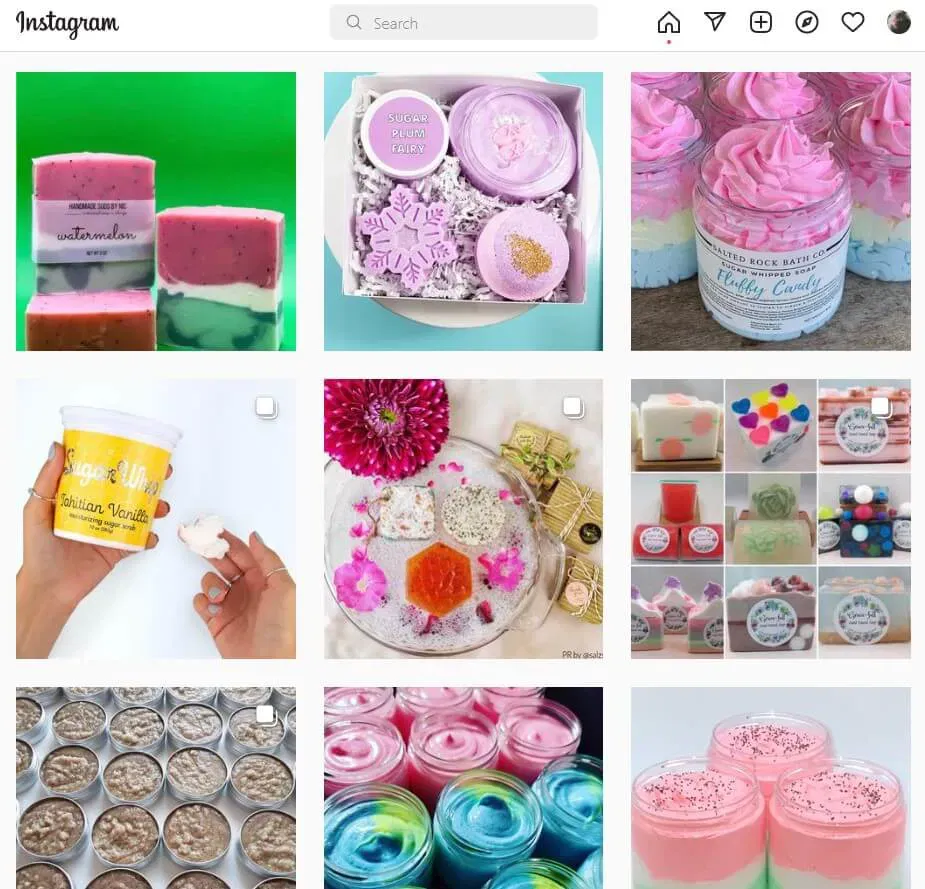
For posting periods, I scheduled content around launches and used natural stories (user-generated content, customer unboxings). I also leveraged hashtags and SEO-friendly captions so people could discover me via search. Plus, occasionally, I ran small paid ad boosts for posts that performed well organically (which I will talk about in the last tip).
16. Use Etsy Ads wisely to gain visibility without overspending
Lastly, I did know that Etsy Ads could help me reach more people, but I also saw many sellers drain their budgets with little return. So I treated Etsy Ads as a supporting tool rather than my main solution.
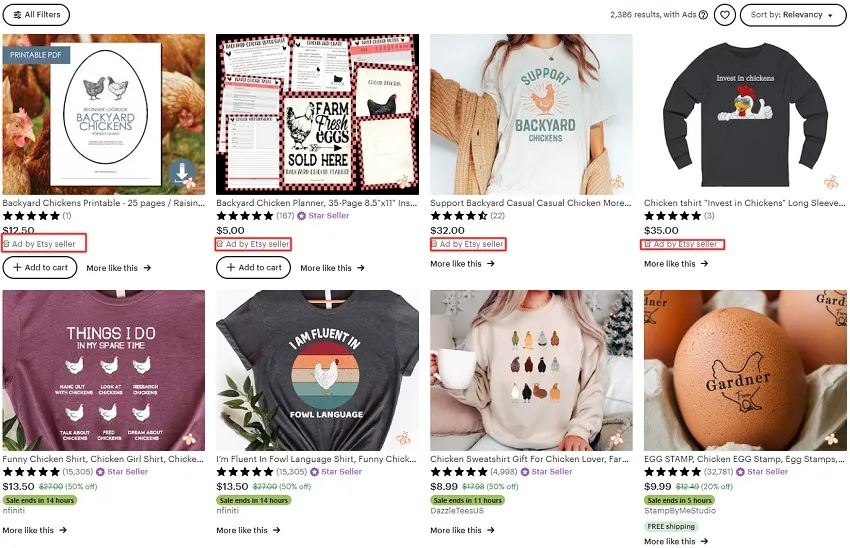
My first move was setting a daily budget cap, an amount I was comfortable losing while experimenting. Then I picked only a few best-performing listings (the ones with good reviews and stable conversions) to promote, rather than pushing everything. This reduced wasted spending. Plus, during each month, I monitored which keywords and listings got clicks and sales, and shifted budget toward those.
And here's one trick: I would sometimes rotate promotions by promoting a bundle under ad when it wasn't selling organically, or promoting a new listing to give it initial visibility. Because I had already built up good photos, reviews, and listing quality, my promoted items performed better than I expected. The result: ads contributed to 20–30% of my new sales while only consuming a fraction of revenue.
How to Get Sales on Etsy: FAQs
Can you make $10,000 a month on Etsy?
Yes, it’s absolutely possible, but it doesn’t happen overnight or by luck. The key is scalability. To reach that level, you’ll likely need a catalog of products that can sell steadily, strong SEO for organic traffic, and some reinvestment into ads or production capacity.
How to make 10 sales a day on Etsy?
To make 10 sales a day on Etsy, the first step is optimizing your shop foundation: clear photos, strong descriptions, searchable titles, and an overall brand that feels trustworthy. Once that base is solid, you should use consistent activity to keep my shop visible.
How much does Etsy take from a $100 sale?
For a $100 sale, Etsy takes approximately $10.20 in mandatory fees (including a 6.5% transaction fee and a payment processing fee, plus a 20-cent listing fee). Still, this number can be higher depending on your location, currency conversion, and optional advertising costs.
What is the #1 selling item on Etsy?
There is no single #1 selling item on Etsy, but personalized jewelry and digital products are consistently among the top-selling categories.
Conclusion
Looking back, the biggest lesson I learned from my first year about how to get sales on Etsy is persistence.
Every improvement, from better photos to more thoughtful customer care, added up little by little. There were no overnight wins, just consistent effort that built real momentum. So take what resonates, start small, and build from there!
For more tips and guidance, check out our Etsy guides and join our Facebook Community.
